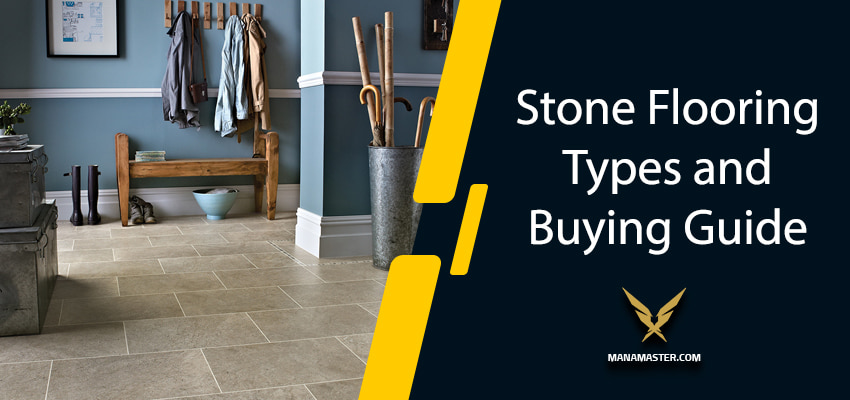When selecting stone flooring for your project, it’s essential to consider various factors such as the type of stone, its characteristics, and how well it aligns with your specific requirements.
In this article, we will explore different types of stone flooring and provide guidance on choosing the most suitable option for your project.
stone flooring types
The best kinds of stone flooring depend on various factors such as the location, usage, design preferences, and budget.
Here are some popular types of stone flooring:
Marble
- Appearance: Marble is elegant and luxurious with natural veining and color variations.
- Durability: Moderately durable, softer than granite.
- Best For: Low-traffic areas like bathrooms, formal living rooms.
- Considerations: Requires regular sealing to prevent staining.
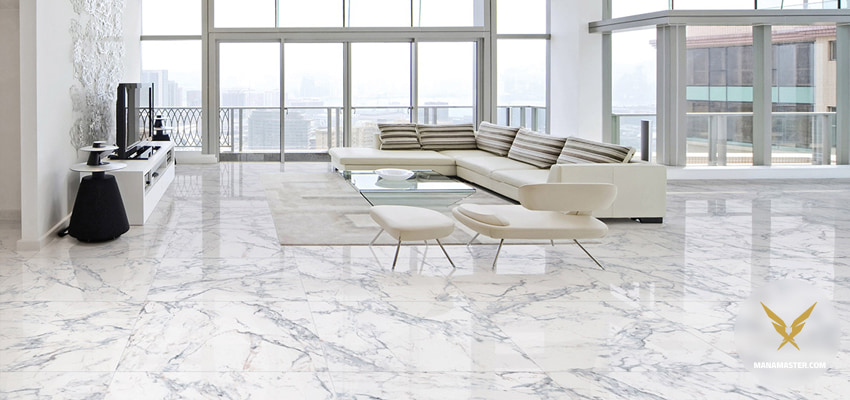
Granite
- Appearance: Speckled or mottled patterns in various colors.
- Durability: Highly durable and resistant to scratches and heat.
- Best For: High-traffic areas, kitchens, and commercial spaces.
- Considerations: Limited color choices compared to other stones.

Limestone
- Appearance: Natural, earthy tones with a soft, chalky texture.
- Durability: Softer than granite; may require more maintenance.
- Best For: Formal spaces with light foot traffic.
- Considerations: Susceptible to scratching and staining.
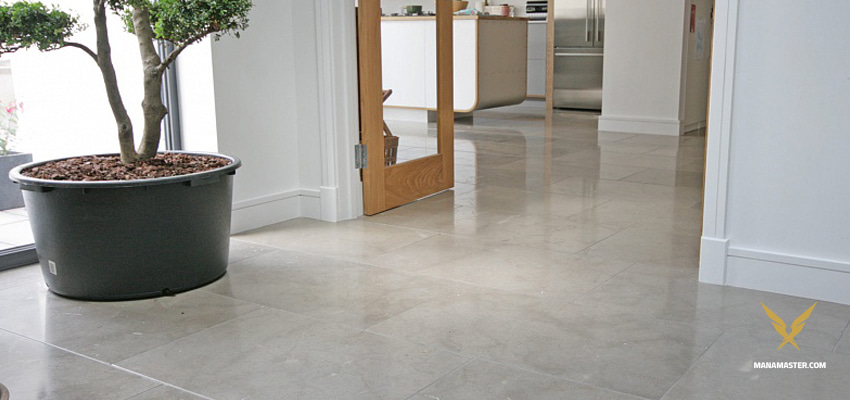
Travertine
- Appearance: Earthy tones with unique porous surface and natural pits.
- Durability: Softer than granite; requires regular sealing.
- Best For: Indoor use, low-traffic areas.
- Considerations: Prone to scratching and staining.
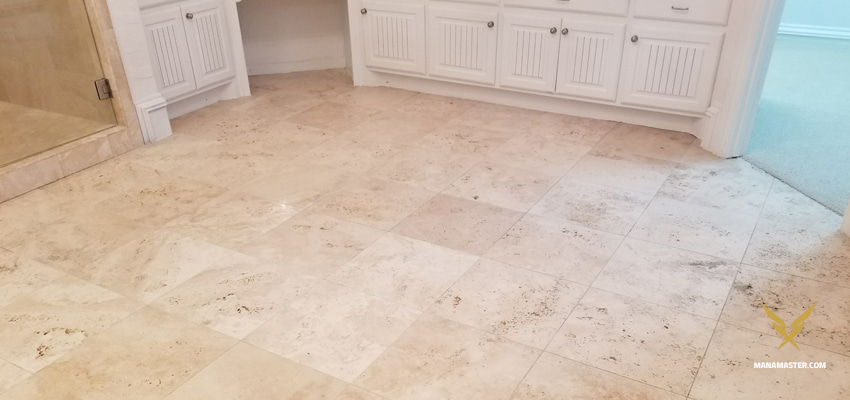
Slate
- Appearance: Diverse color palette with a textured surface.
- Durability: Durable, resistant to scratches and stains.
- Best For: Kitchens, hallways, and outdoor spaces.
- Considerations: Can be uneven, may chip at the edges.
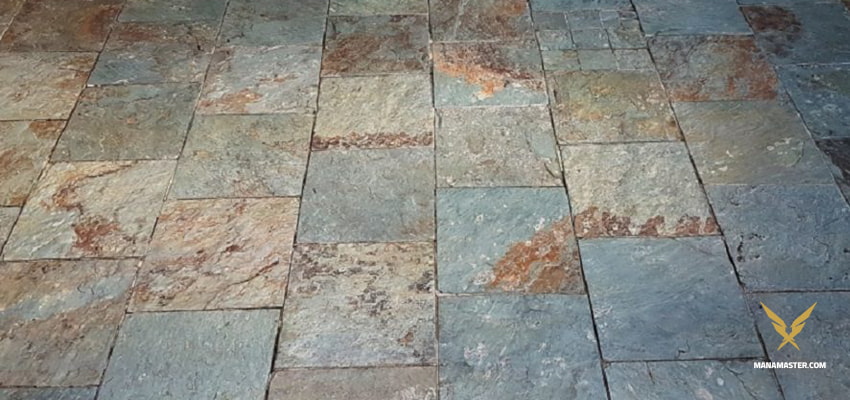
Sandstone
- Appearance: Varied colors with a grainy texture.
- Durability: Soft to moderately hard; regular sealing is recommended.
- Best For: Indoor and outdoor use in low-traffic areas.
- Considerations: Susceptible to scratching and staining.
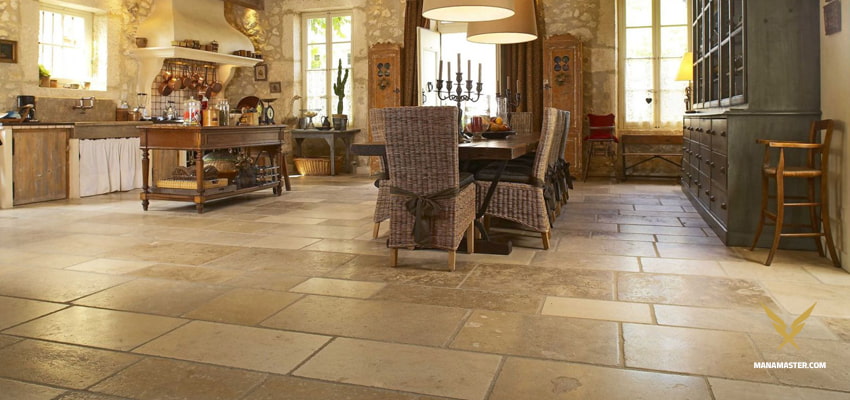
Flagstone
- Appearance: Flat, irregular-shaped stones with a natural look.
- Durability: Durable and well-suited for outdoor use.
- Best For: Patios, walkways, and outdoor living spaces.
- Considerations: May be uneven, requiring a level subfloor.
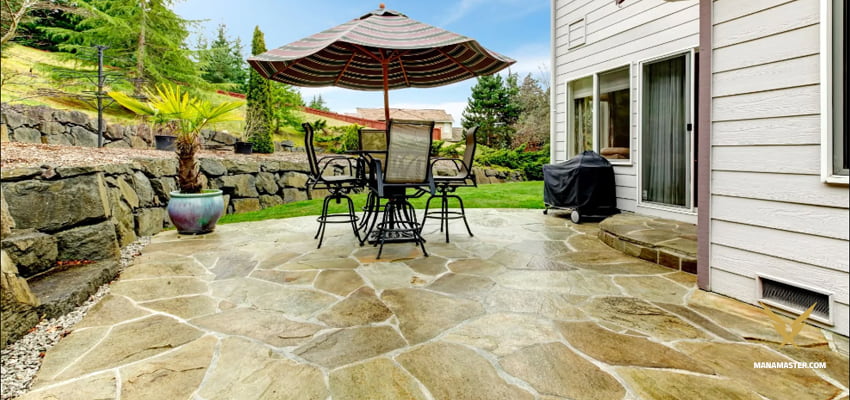
Quartzite
- Appearance: Similar to marble but with greater durability.
- Durability: Very durable and resistant to scratches.
- Best For: High-traffic areas, kitchens, and bathrooms.
- Considerations: Limited color options.
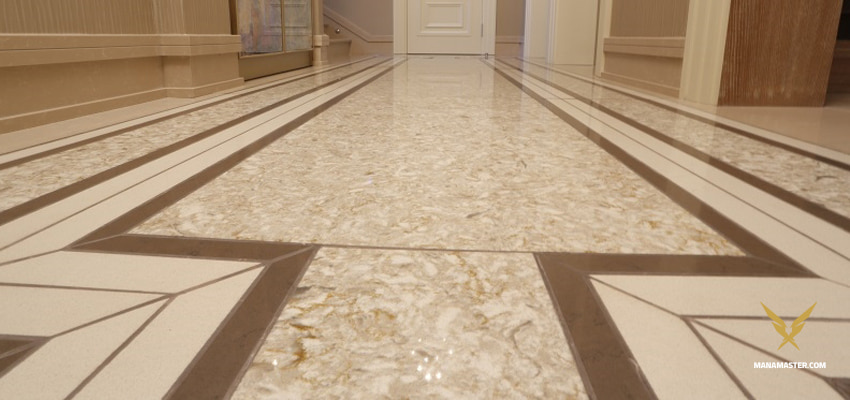
How to choose the best stone flooring
Choosing the right stone flooring involves considering various factors to ensure that the selected material meets your aesthetic preferences, functional needs, and budget constraints.
Looking for top-quality stone flooring for your next construction project?
Contact us at 09162161404 to get started
Here is a step-by-step guide to help you choose stone flooring:
Determine the Location and Usage:
Identify the specific rooms or areas where you plan to install stone flooring. Consider the level of foot traffic, potential exposure to moisture, and the function of each space (e.g., kitchen, bathroom, living room).
Understand stone flooring types:
Familiarize yourself with different types of stone flooring, such as marble, granite, limestone, slate, travertine, etc. Each type has unique characteristics, including color variations, hardness, and maintenance requirements.
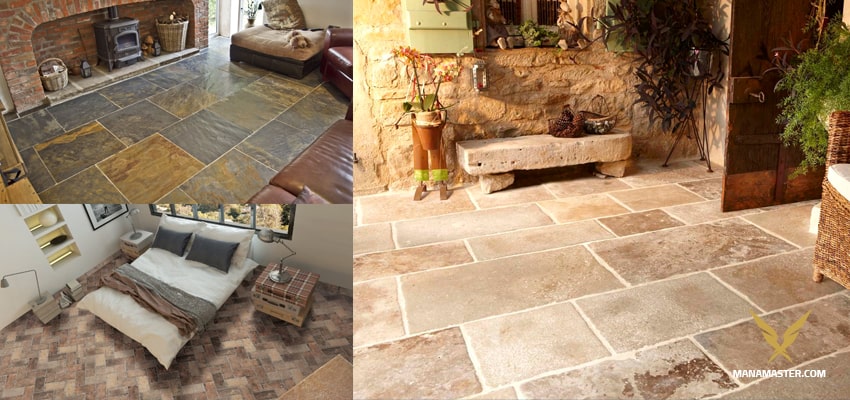
Consider Durability
Assess the durability of the stone in relation to the expected foot traffic in the chosen location. For high-traffic areas, opt for harder stones like granite, while softer stones may be suitable for lower-traffic areas.
Evaluate Maintenance Requirements:
Understand the maintenance needs of each stone type. Some stones may require regular sealing to prevent staining, while others are more low-maintenance. Consider the time and effort you’re willing to invest in maintaining your flooring.
Set a Budget:
Establish a budget for your stone flooring project. Different types of stones come with varying price points, and additional costs may include installation, sealing, and any necessary subfloor preparation.
Consider Aesthetic Preferences:
Think about the overall design aesthetic you want to achieve. Consider the color, pattern, and finish options available for each type of stone. Collect samples or images to visualize how each stone will complement your space.
Check Compatibility with Underfloor Heating:
If you plan to install underfloor heating, ensure that the chosen stone is compatible with this type of system. Some stones conduct heat better than others.
Seek Professional Advice:
Consult with professionals, such as architects, interior designers, or flooring specialists. They can provide valuable insights based on your specific needs, help you navigate the options, and ensure that the chosen stone is suitable for your space.
Inspect Samples:
Obtain samples of your preferred stone options and inspect them in different lighting conditions. This can help you visualize how the stone will look in your space.
Get Quotes and Compare Costs:
Obtain quotes for the selected stone and installation costs from multiple suppliers or contractors. Compare the quotes to ensure they align with your budget.
Make a Final Decision:
After thorough consideration of all factors, make a final decision on the type of stone flooring that best meets your needs and preferences.
Conclusion
If you are a buyer or importer looking to source stone for your building construction projects, it’s essential to partner with reliable stone flooring suppliers.
At Manastone, we offer a wide selection of stone flooring options, ensuring you have access to the best variety for your specific needs.
Fill the form below and we will contact you shortly
FAQ
1.What to consider when choosing living room stone flooring?
When selecting stone flooring for your living room Choose one that can withstand the high foot traffic typical of living spaces; options like granite, slate, or durable marble are suitable.
Assess the color, pattern, and finish to ensure it complements your living room’s design. If comfort is a concern, consider incorporating area rugs or underfloor heating to mitigate the coolness of the stone.
2. what to consider when choosing stone kitchen flooring
1. When choosing stone flooring for your kitchen prioritize durability, as the kitchen is a high-traffic area prone to spills and heavy use.
2. Opt for hard and resilient stones like granite or slate that can withstand the demands of daily cooking activities.
3. Consider the ease of maintenance; choose a stone that is resistant to stains and is easy to clean, as kitchens are susceptible to spills and food-related messes.
4. Pay attention to the slip resistance of the stone, especially since kitchens can be prone to water spills.
3. What is the most durable natural stone flooring?
Granite is generally considered one of the most durable natural stone flooring options. While granite is renowned for its durability, it’s essential to note that proper installation and maintenance practices, such as sealing and routine cleaning, contribute significantly to the longevity and performance of any natural stone flooring
4.What is the most expensive stone flooring?
Marble is often considered one of the most expensive types of stone flooring. Other exotic and rare stones, such as onyx or certain types of granite, may also command high prices based on their uniqueness and scarcity. Additionally, factors like installation complexity and customization can contribute to the overall expense of stone flooring projects.
5.What is the most affordable natural stone?
When it comes to affordability among natural stone options, slate is often considered one of the more budget-friendly choices.
